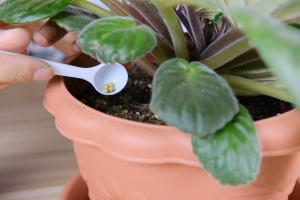Introduction
Measurement of plant water content is an essential aspect of plant physiology research. It helps to determine the amount of water present in a plant, which directly affects its growth and development. Plant water content is a crucial parameter in agriculture, gardening, and environmental research. In this article, we will discuss how to calculate plant water content using different methodologies.
Methodologies to calculate plant water content
Method 1: Oven-drying method
The oven-drying method is one of the most commonly used techniques to calculate plant water content. It involves drying the plant samples in an oven at a specific temperature until they reach a constant weight. The following are the steps involved in the oven-drying method:
Weigh the fresh plant sample and record the weight as the initial weight (W1).
Place the plant sample in an oven at a temperature of 105-110°C.
Dry the plant sample until the weight remains constant. Record the final weight as W2.
Calculate the plant water content using the following formula:
Plant water content (%) = [(W1 - W2)/W1] x 100
Method 2: Gravimetric method
The gravimetric method is another commonly used technique to determine plant water content. It involves determining the weight loss of a plant sample after drying it under specific conditions. The following are the steps involved in the gravimetric method:
Collect a fresh plant sample and weigh it. Record the weight as W1.
Dry the sample in an oven at a temperature of 60-80°C.
Weigh the sample after drying and record the weight as W2.
Calculate the plant water content using the following formula:
Plant water content (%) = [(W1 - W2)/W1] x 100
Method 3: Distillation method
The distillation method is a complex but reliable technique used to calculate plant water content. It involves distilling the water from plant samples and measuring the amount of water collected. The following are the steps involved in the distillation method:
Weigh the fresh plant sample and record the weight as W1.
Add the plant sample to a flask containing distilled water.
Distil the mixture, and collect the distilled water in a collecting flask.
Weigh the collecting flask containing the distilled water and record the weight as W2.
Calculate the plant water content using the following formula:
Plant water content (%) = [(W2 - W1)/W1] x 100
Conclusion
In conclusion, plant water content is an essential factor in plant physiology research. Measuring plant water content provides vital information on the status of a plant’s water supply and helps in determining the amount of water in the soil that is necessary for optimal plant growth. The methods discussed in this article are some of the commonly used techniques to calculate plant water content. However, researchers must choose the most suitable methodology depending on the type of plant and the research objectives.

 how many times do yo...
how many times do yo... how many planted tre...
how many planted tre... how many pine trees ...
how many pine trees ... how many pecan trees...
how many pecan trees... how many plants comp...
how many plants comp... how many plants can ...
how many plants can ... how many plants and ...
how many plants and ... how many pepper plan...
how many pepper plan...
































